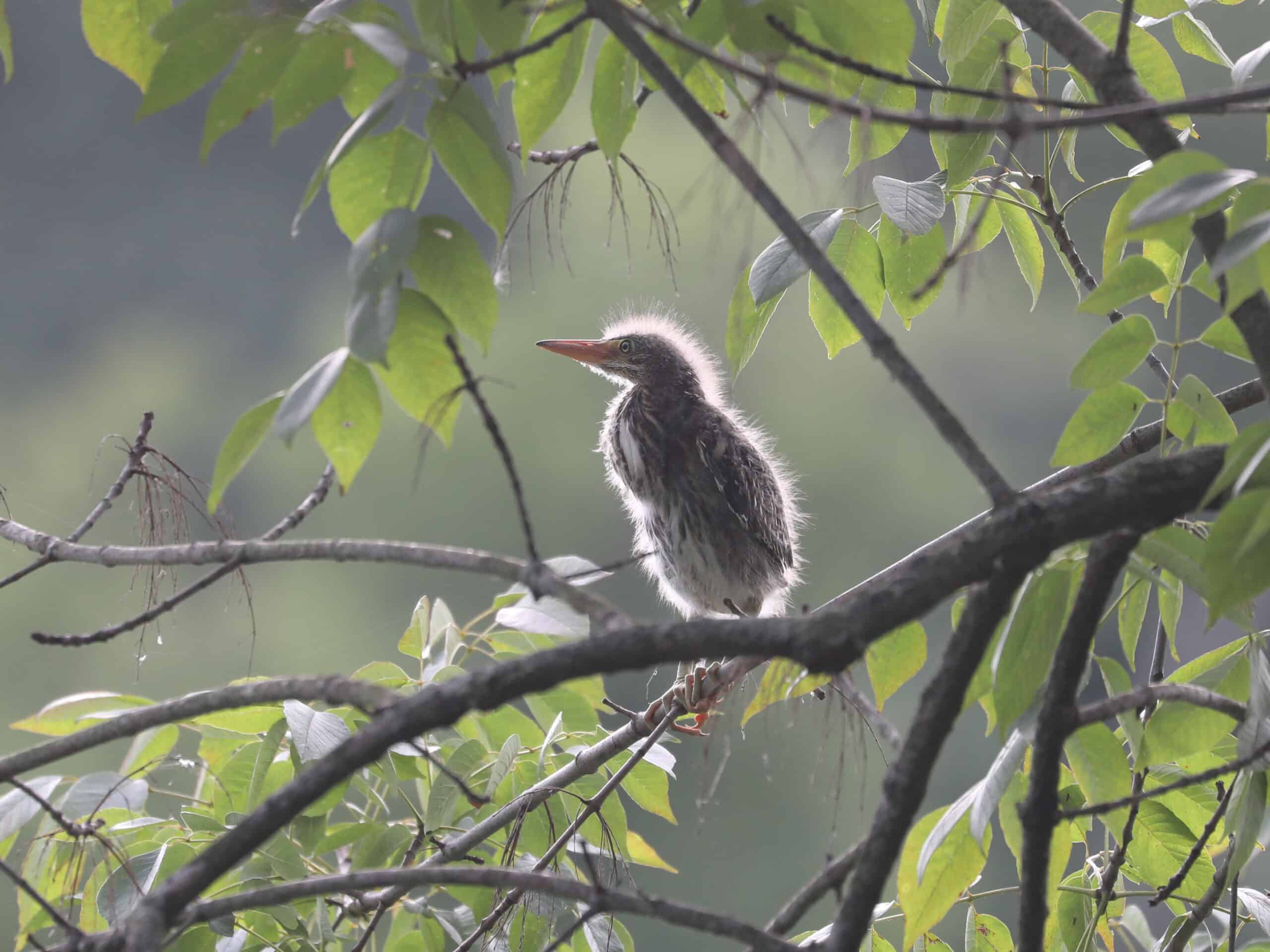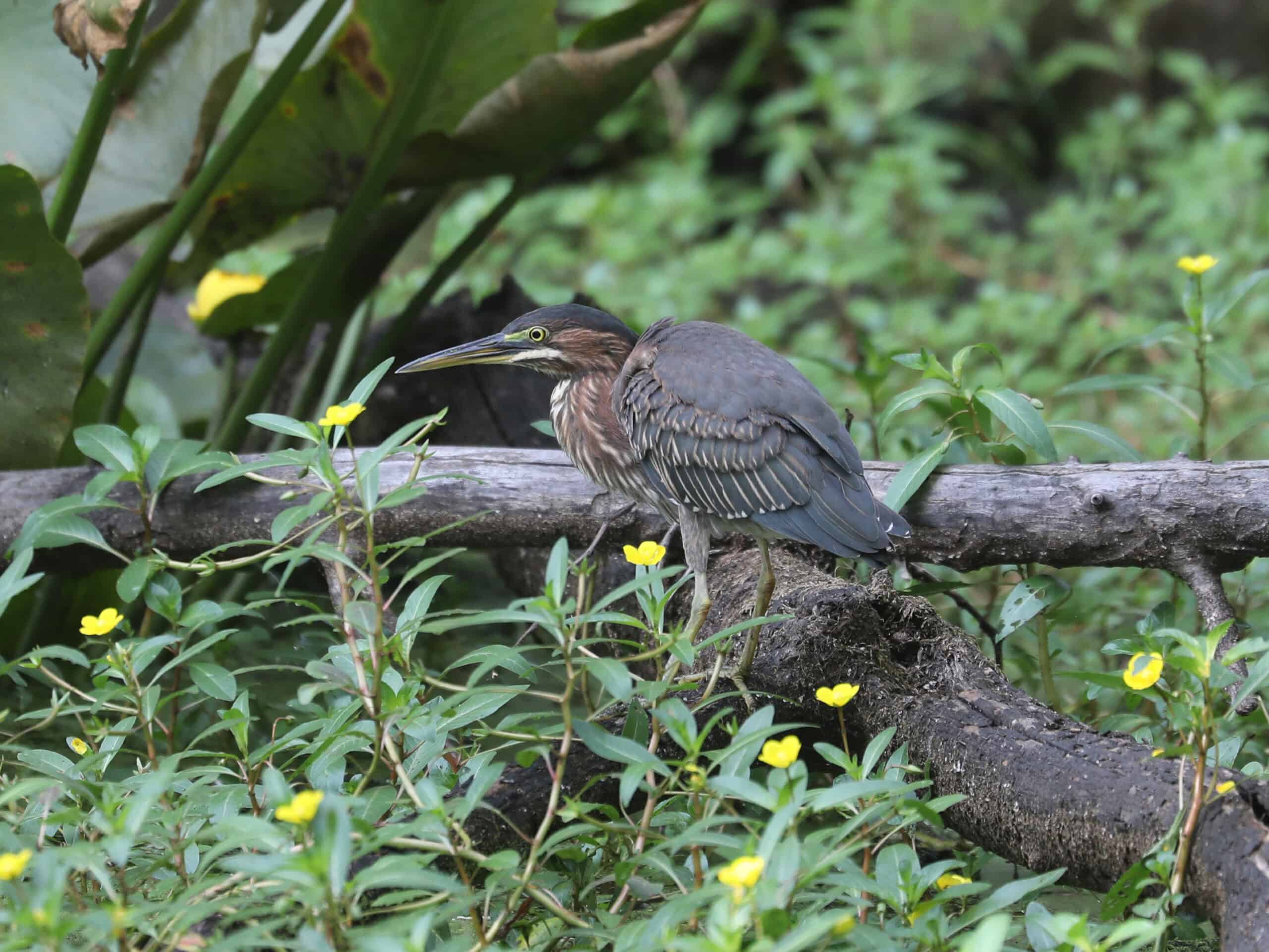Fluffball: Green Heron
This little fluffball is a juvenile Green Heron. It hatched from an egg only a few weeks ago, in a stick nest built on a tree branch overhanging a shallow wetland. For the next week or so, it will stay in or near the nest tree, with its parents bringing food several times each day. After that it will start following its parents around, learning how to find food for itself. Within about a month, it will be on its own. The adult in the photo below was only about 50 feet away and may be one of the fluffball’s parents.
You can find Green Herons in most wetland habitats across Pennsylvania in the summer, especially where there are thickets of dense vegetation. Unlike the familiar Great Blue Heron, Green Herons spend less time out in the open, so you’re more likely to see them when they fly across the wetland. Green Herons are small, only about one tenth as heavy as a Great Blue Heron, or about the same weight as two Mourning Doves.
Green Herons are a fairly common breeding bird in Pennsylvania, but their population in the state has declined by about 15 percent since the 1960s. The stream and wetland habitats they use are abundant, and there is actually more wetland habitat in the state than there was 60 years ago. However, many stream and wetland habitats are of lower quality due to pollution from agriculture and acidic drainage from coal mines.
Fluffball: Green Heron
This little fluffball is a juvenile Green Heron. It hatched from an egg only a few weeks ago, in a stick nest built on a tree branch overhanging a shallow wetland. For the next week or so, it will stay in or near the nest tree, with its parents bringing food several times each day. After that it will start following its parents around, learning how to find food for itself. Within about a month, it will be on its own. The adult in the photo below was only about 50 feet away and may be one of the fluffball’s parents.
You can find Green Herons in most wetland habitats across Pennsylvania in the summer, especially where there are thickets of dense vegetation. Unlike the familiar Great Blue Heron, Green Herons spend less time out in the open, so you’re more likely to see them when they fly across the wetland. Green Herons are small, only about one tenth as heavy as a Great Blue Heron, or about the same weight as two Mourning Doves.
Green Herons are a fairly common breeding bird in Pennsylvania, but their population in the state has declined by about 15 percent since the 1960s. The stream and wetland habitats they use are abundant, and there is actually more wetland habitat in the state than there was 60 years ago. However, many stream and wetland habitats are of lower quality due to pollution from agriculture and acidic drainage from coal mines.
About The Author
Dan Hinnebusch is the Ornithologist for Wild Birds Unlimited. Click to learn more.





